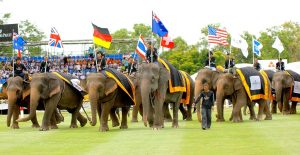From fitness influencers breaking out their designer mats to showcase their flexibility and implementing stretches into a self-care routine, there’s a lot of yoga happening all over the world today. And yet, most of them have very little to do with what yoga truly is.
Whether it’s treating yoga as purely a physical exercise or a practice that can only be done by women, we’re demystifying the ancient practice of yoga in conjunction with International Yoga Day (21 June), and debunking three of the most common yoga myths. Read on to discover the truth, guided by investor, art gallery owner, registered yoga teacher (RYT 500), and meditation practitioner Michael Teh.
Yoga is just a physical exercise
There’s a common misconception that yoga is mainly about stretching or showing that you’re able to do a headstand or putting your ankle behind your head. This is due to Western influence on modern yoga, which developed into a posture-based physical fitness and relaxation technique. However, the core of the practice goes much more further than that. Yoga, in Sanskrit, literally means “union”, or “to yoke” into a singular focus, which encompasses the unity between the body, mind, and spirit. Its philosophy centres around guiding us to our true selves, achieving clarity and inner peace, and enabling us to realise who we truly are.
The yoga poses that we are most familiar with and practice refers to only one of the eight limbs of yoga, a general term for various postures called Asana, which is extended in Hatha Yoga. Asana works synergistically with the other limbs, which include Yama (attitudes toward our environment), Niyama (internal disciplines), Pranayama (restraint or expansion of the breath), Pratyahara (withdrawal of the senses), Dharana (concentration), and Dhyana (meditative absorption) until one ultimately reaches Samadhi (union, integration), the 8th and final stage of yoga, where one’s awareness dissolves into the great Whole of the universe.
Related: How Michael Teh achieved power over the self through spirituality.
Yoga is only for women
While yoga is predominantly practised by women, yoga itself is not a gender-specific activity. In fact, some of the world’s most renowned gurus and yogis were actually male – including Paramahansa Yogananda, Swami Sivananda Saraswati, Maharishi Mahesh Yogi, and Swami Rama.
With that said, yoga can also be practiced by everyone regardless of age and gender. All it takes is dedication, practice, and education.
Yoga and meditation are different
Interestingly, meditation is a form of yoga. Out of the eight limbs of yoga, four of them actually focus on meditation practices. This includes Pratyahara (the withdrawal of the senses), Dharana (concentration), Dhyana (meditative absorption), and Samadhi (union, integration). Asana, or the physical practice of yoga, works to “prepare” the body, allowing it become more flexible prior to long periods of seated and concentrated meditation.
The aim of yoga is to bring all eight limbs into practice, achieving the state of Samadhi, where one is in a state of intense concentration, at which union with the divine or the Universe is reached. This also enables the practitioner to achieve a higher awareness of the self, as well as self-realisation, where one also experiences peace, absolute bliss, joy, and love.
For more information about Michael Teh and his programs, visit his official website iammichaelteh.com, or visit his Instagram or Facebook page.






